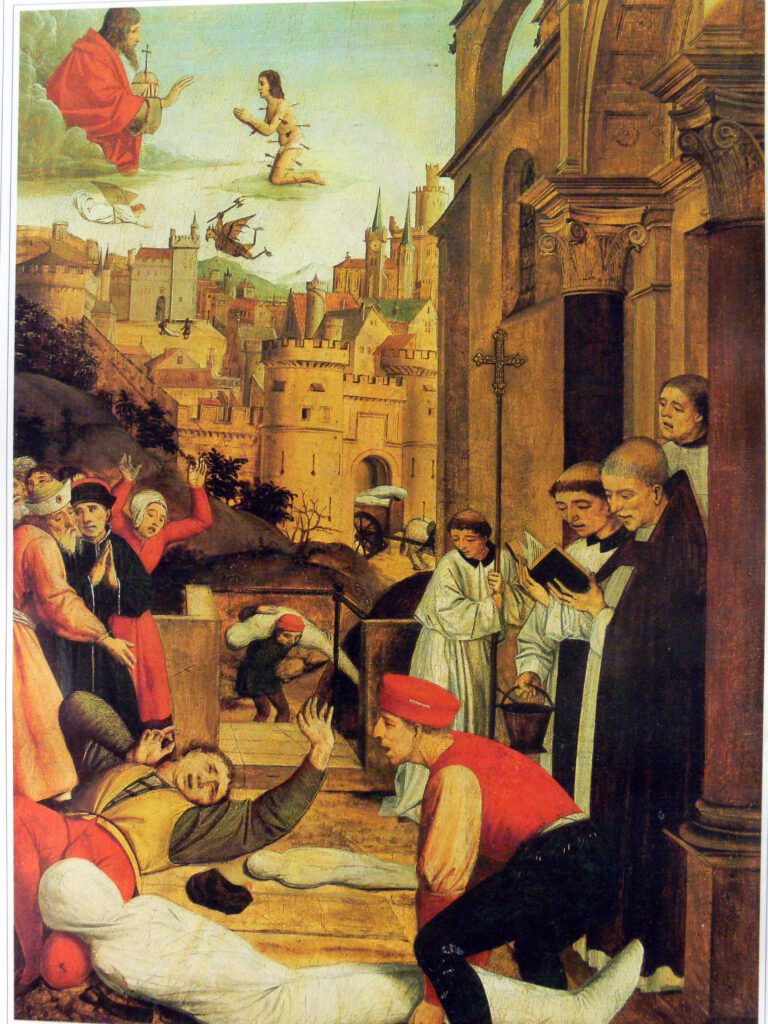
There was a time when humans may have solely attributed their illnesses to powers that could turn rivers into blood, kill firstborns, unleash swarms of frogs, lice, flies, and locusts (Exodus 7-10), cause contagious skin diseases (Leviticus 13:2-33), or send hideous, dangerous serpents to kill evildoers (Numbers 21:5-9).1 But in the relatively brief time of some 140 years we have learned about microorganisms’ role in infections and how many deadly diseases originating from Africa or Asia have wreaked worldwide havoc in the form of epidemics.
Thus from Ethiopia came the Plague of Athens (430 BC),2 masterfully described by Thucydides as killing one-third of Athens’ population and its leader Pericles.2,3 The Justinian Plague (AD 541) of Yersinia pestis came from Central Asia, devastated Constantinople, and killed one quarter of the population of the Byzantine Empire. It reappeared in AD 638 as the Plague of Amwas, causing the death of another 25,000 soldiers, helping to establish the Umayyad Caliphate in 661 but perhaps contributing to its downfall in AD 750.3-6
In the fourteenth century Yersinia pestis returned from Asia as the Black Death, carried by rats, and killed more than 25 million, or about one-third, of Europe’s population.4 It came back periodically in epidemic waves until as late as the twentieth century. Between 1898 and 1918 some twelve million people died from bubonic plague in India. The plague came to Sydney in 1900,6 killed some 60,000 in Manchuria between 1910 and 1911, and also affected California.
Other plagues invaded through the water supply. Cholera spread from Bengal to most of Asia and the Middle East (1817), then re-emerged as the second worldwide pandemic in 1826–1832. A third cholera pandemic struck England most severely in 1848 and was famously brought to heel by John Snow removing the handle of the Broad Street Pump.7 Cholera remained largely confined to mainland East Asia, except for Japan in 1946 and Egypt and Syria in 1947. But a seventh cholera pandemic broke out in 1961, spreading from Tunisia and Algeria to Italy, especially to Campania, Apulia, and Sardinia.8
Then came the influenza pandemics, the Spanish, Asian, and Hong Kong varieties of 1918, 1957, and 1968.9,10 Another feared virus caused paralytic polio between 1930 and 1960 until subdued by the Salk and Sabin vaccines.11 The Ebola virus is still largely confined to the African continent,12 as is Lassa fever which infects about 100,000 to 300,000 persons each year and kills about five thousand.13 A newer virus, Covid-19, recently probably originated from China, its pandemic lasting a little over three years, affecting an estimated 17 to 30 million people and causing the death of some seven million. For humanity it has been an unfair and unequal battle, but at least it has given a new lease of life to the specialty of Infectious Diseases and a justification for publishing this column in this journal.
Further reading
- The Holy Bible, followed by articles published in Hektoen International:
- “The Plague of Athens.” Infectious Diseases. https://hekint.org/2017/02/01/the-plague-of-athens/
- Patrick Bell. “Ancient Greek plague and coronavirus.” Winter 2021. https://hekint.org/2021/03/26/ancient-greek-plague-and-coronavirus/
- Arpan K. Banerjee. “Review: The History of the World in 100 Pandemics, Plagues and Epidemics.” Summer 2021. https://hekint.org/2021/09/24/review-the-history-of-the-world-in-100-pandemics-plagues-and-epidemics/
- Barry R. Catchlove. “Plague Sydney 1900.” Spring 2010. https://hekint.org/2017/02/01/plague-sydney-1900/
- Colleen Donnelly. “COVID-19 and the Black Death.” Summer 2020. https://hekint.org/2020/09/03/covid-19-and-the-black-death/
- JMS Pearce. “Epidemic cholera and Joseph William Bazalgette.” Fall 2021. https://hekint.org/2021/12/22/epidemic-cholera-and-joseph-william-bazalgette/
- Salvatore Barbuti, Domenico Martinelli, and Rosa Prato. “Bari in the seventh cholera pandemic. Winter 2017. https://hekint.org/2017/03/24/bari-in-the-seventh-cholera-pandemic/
- Edward Winslow. “Have we learned anything from 1918–1919 influenza?” Spring 2020. https://hekint.org/2020/06/01/have-we-learned-anything-from-1918-1919-influenza/
- Cristóbal S. Berry-Cabán. “Katherine Anne Porter and the 1918 influenza epidemic.” Summer 2017. https://hekint.org/2017/08/23/katherine-anne-porter-1918-influenza-epidemic/
- James L. Franklin. “A Cold War vaccine: Albert Sabin, Russia, and the oral polio vaccine.” Spring 2020. https://hekint.org/2020/05/11/a-cold-war-vaccine-albert-sabin-russia-and-the-oral-polio-vaccine/
- Kenneth Okpomo. “Making history by eradicating Ebola.” Spring 2016. https://hekint.org/2017/02/01/making-history-by-eradicating-ebola/
- Patrick Ashinze. “Lassa: The small town with the mark of death.” Spring 2023. https://hekint.org/2023/05/08/lassa-the-small-town-with-the-mark-of-death/

Leave a Reply